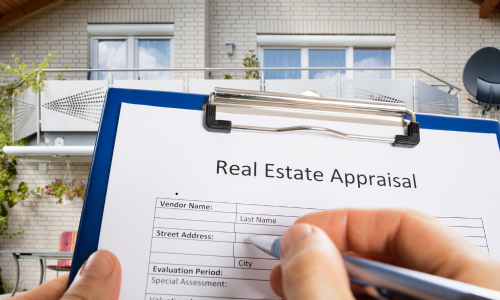🚨 Low Appraisal Before Closing? Here’s What to Do Next! 🏡💸
Picture this: You’re on the verge of closing a real estate deal—excitement is in the air, boxes are being packed, and dreams are about to become reality. 🎉 But then, suddenly, the unexpected happens—the appraisal comes in lower than the agreed-upon purchase price. 😱
It’s a scenario that can leave both buyers and sellers frustrated, confused, and scrambling for solutions. But don’t worry! A low appraisal doesn’t have to kill the deal. There are several strategies to navigate this challenge and still get to the closing table successfully.
This comprehensive guide will break down:
✅ Why appraisals come in low
✅ How they impact buyers, sellers, and lenders
✅ The best solutions to keep your deal alive
✅ Preventive measures to avoid future low appraisals
Let’s dive in! 🚀
 🔍 What is an Appraisal and Why Does It Matter?
🔍 What is an Appraisal and Why Does It Matter?
Before tackling low appraisals, it’s essential to understand what an appraisal is and why it plays a crucial role in real estate transactions.
An appraisal is a professional assessment of a property’s value, conducted by a licensed appraiser. 🏡📊 The goal is to ensure that lenders are not financing a home for more than it’s worth—which protects them (and buyers) from overpaying.
Who Orders the Appraisal?
The buyer’s lender typically orders the appraisal, but the buyer pays for it as part of the mortgage process. The appraisal report considers:
📍 Comparable sales (comps) – Recent sales of similar homes in the area
📍 Property condition – Quality of construction, upgrades, and any defects
📍 Market conditions – Supply and demand, local trends, and economic factors
📍 Size & features – Square footage, number of bedrooms/bathrooms, amenities
If the appraisal comes in lower than the agreed price, it creates a financing gap—because lenders only finance the home up to the appraised value. This means the deal could be at risk unless alternative solutions are found.
🚨 Why Do Appraisals Come in Low?
A low appraisal isn’t always a mistake—it’s often the result of specific market conditions, pricing errors, or strict lender guidelines. Here are some of the most common reasons why appraisals come in below the expected value:
1️⃣ Rapidly Changing Market Conditions 📉📈
If the market is shifting quickly (either up or down), appraisals may not reflect the latest price trends. This is especially common in:
✔️ Fast-rising seller’s markets – Where homes are selling above asking price, but appraisers use outdated comps
✔️ Cooling buyer’s markets – Where home values are declining, and the appraisal reflects the lower end of pricing trends
2️⃣ Lack of Comparable Sales (Comps) 📊
Appraisers rely on recent sales of similar homes in the area. If there haven’t been many recent transactions, or if no properties closely match yours, the appraisal could come in lower than expected.
3️⃣ Appraiser’s Subjectivity 🧐
While appraisals follow industry standards, some degree of subjectivity is inevitable. Two different appraisers could evaluate the same home slightly differently, leading to variations in valuation.
4️⃣ Overpricing by the Seller 💰
Sometimes, sellers (or agents) overestimate the home’s market value. This can happen when pricing is based on emotions, wishful thinking, or outdated comparable sales. If the appraisal doesn’t support the asking price, the lender won’t approve the full loan amount.
5️⃣ Property Condition Issues 🏚️
If the appraiser notices deferred maintenance, outdated systems, or hidden issues, they may reduce the value. Common red flags include:
⚠️ Structural damage (roof, foundation, or walls)
⚠️ Outdated or poorly maintained electrical/plumbing systems
⚠️ Unfinished renovations or unpermitted additions
6️⃣ Errors in the Appraisal Report 📝
Mistakes happen! Sometimes, an appraiser might:
❌ Use incorrect data (wrong square footage, missing upgrades, etc.)
❌ Overlook key improvements that add value
❌ Rely on outdated or irrelevant comps
If you suspect an error, don’t panic—you can challenge the appraisal (more on that below).
 💥 The Impact of a Low Appraisal
💥 The Impact of a Low Appraisal
A low appraisal can send shockwaves through a transaction. Here’s how it affects each party:
🔹 Buyers
❌ May have to pay the difference between the appraised value and purchase price
❌ Could see their loan approval fall through if they can’t cover the shortfall
❌ Might need to renegotiate with the seller or look for a new lender
🔹 Sellers
❌ May have to reduce the price to keep the deal alive
❌ Could lose the buyer if they can’t reach an agreement
❌ Might have to wait for a new buyer and risk further delays
🔹 Lenders
❌ Won’t approve a loan for more than the appraised value
❌ Require proof of value to protect their investment
But don’t worry—there are several strategies to fix this issue and keep your deal on track! 🚀
🛠️ 7 Ways to Handle a Low Appraisal
1️⃣ Request an Appraisal Reconsideration
If you believe the appraisal is incorrect, you can request a re-evaluation by:
✔️ Reviewing the report for errors or missing details
✔️ Providing additional comparable sales
✔️ Highlighting recent upgrades that weren’t considered
📌 Pro Tip: Work with your agent to present a strong case with solid data!
2️⃣ Renegotiate the Purchase Price 💬
If the seller is motivated, they may agree to reduce the price to match the appraised value. This is often the simplest and fastest solution!
3️⃣ Split the Difference
A fair compromise is for both buyer and seller to contribute to cover the shortfall.
Example:
💰 Appraised Value: $480,000
💰 Purchase Price: $500,000
💰 Shortfall: $20,000
✔️ Buyer pays $10,000 extra
✔️ Seller reduces price by $10,000
🤝 This keeps the deal alive without overburdening one party.
4️⃣ Buyer Pays the Difference
If the buyer has extra cash, they can cover the shortfall themselves. This is ideal for competitive markets where homes are in high demand.
5️⃣ Find a New Lender 🔄
If one lender’s appraiser undervalues the home, another lender might see it differently. Switching lenders can trigger a new appraisal, potentially solving the problem.
📌 Warning: This can take time, so make sure you’re not risking delays that could kill the deal.
6️⃣ Order a Second Appraisal 🏡📊
In some cases, a new appraisal might come in higher. However, this is not always guaranteed, so weigh the risks before proceeding.
7️⃣ Walk Away (Last Resort) 🚪
If no agreement is reached and the buyer has an appraisal contingency, they can cancel the deal and get their deposit back.
📌 For Sellers: If multiple deals fall through due to low appraisals, consider adjusting the listing price to better reflect market conditions.
 💡 How to Prevent Low Appraisals in the Future
💡 How to Prevent Low Appraisals in the Future
🔹 Sellers:
✔️ Price your home strategically
✔️ Keep a list of upgrades and provide them to the appraiser
✔️ Make small repairs to improve the home’s overall condition
🔹 Buyers:
✔️ Work with an experienced agent who understands market trends
✔️ Be prepared with extra funds in case of a shortfall
✔️ Include an appraisal contingency to protect yourself
🔹 Agents:
✔️ Educate clients about appraisal risks
✔️ Stay proactive in communicating with appraisers
✔️ Provide strong comps to justify pricing
🎯 Final Thoughts: Don’t Let a Low Appraisal Kill Your Deal! 🚀
A low appraisal isn’t the end of the road—it’s just a hurdle that can be overcome with the right approach. Stay calm, explore your options, and work with your real estate team to find the best solution.
🔹 Have you ever faced a low appraisal? Share your experience below! 💬👇
🔹 Need real estate guidance? Contact us today to navigate the process with confidence! 🏡📞

